This book is great- everything the previous read on insects was not. It likewise has lots of brief sections about varied insects (and other invertebrates) but there’s better organized connections between the segments, more details, easy to understand explanations on evolution and behavior, and best yet great photographs (unless creepy crawlies make you feel uncomfortable). The book was written as a companion to Attenborough’s television series about wildlife. I’ve seen many of his documentary films but not this particular one. I actually have three of his other books, but hadn’t read any yet, kind of funny the first one I read was borrowed from the library! I had a bit of trepidation thinking it would be a word-for-word reproduction of what Attenborough had said in the film (and thus maybe not stellar as speaking comes across a bit different than writing), but not at all. The book was written in tandem however the author clarifies that he wrote it as a separate account, and the material is not all the same. (Thus I’m now more eager to read the ones I have that correspond to films I’ve seen).
So, this book tells about some tiny and remarkable creatures. It starts with the oldest known invertebrates, ones that were here before mammals even existed (and are still with us). Horseshoe crabs, scorpions, velvet worms and amblypygids- a creature I never heard of before!- it has traits like both spiders and scorpions. There’s other animals in here that seem a bridge between species, and point to common evolutionary ancestry- like wasp ants. And so many familiar ones- worms, slugs, centipedes, mites, beetles, mantids, grasshoppers, dragonflies, fleas, butterflies, bees, termites and ants etc etc. But in each case I learned new details about their lives that astonished. Months that mimic the scent of dangerous bees and sneak in to eat their honey. Butterflies whose larvae are cared for by ants but then parasitized by a wasp instead. Spiders that sling a silk lasso at passing flying insects. Another that lives underwater in a chamber made of air bubbles. Fungus gnat larvae that glow in the dark (electric blue)- now that’s something I would like to see one day. They reside in caves in New Zealand. Ants that attack other colonies and keep slaves from the rival species. I am already familiar with monarch butterfly migrations and the seventeen-year cicada (they emerged where I live last year)- but it was no less interesting to read about them. There’s so much more in this book. Insects that lay traps for or deceive each other. Others that cooperate and communicate in ways we still don’t understand- the well-designed buildings of termites are a good example. Looking up more about that led me to this. Fascinating stuff all round.
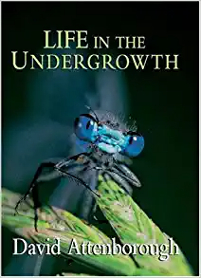
 This is a really family-orientated cookbook. It’s about making the kids happy, food that pleases everyone at the table and isn’t difficult to prepare. The introduction is quite comprehensive, discussing why gluten-free cooking was important for this author’s family, especially her children. How to get kids involved with the cooking. Tips on shopping wisely, parsing ingredient lists on labels for hidden gluten, avoiding cross-contamination in the kitchen and so on. Lots of familiar recipes easily made gluten-free like pancakes, fried chicken, macaroni and cheese, sandwich bread, snickerdoodle cookies. I really want to try the pupusas, “fig einsteins”, lemon bars and spanakoptia hand pies. The chocolate birthday cake I made from this book was fantastic- moist and light. My daughter’s eyes actually bugged out when she took the first bite (previous cakes I tried had come out too dry, or were dense). She even insisted I make it twice, as we had two celebrations. The flour blend that’s a staple for recipes in this book uses brown rice flour, sorghum flour, cornstarch, potato starch, potato flour and xantham gum.
This is a really family-orientated cookbook. It’s about making the kids happy, food that pleases everyone at the table and isn’t difficult to prepare. The introduction is quite comprehensive, discussing why gluten-free cooking was important for this author’s family, especially her children. How to get kids involved with the cooking. Tips on shopping wisely, parsing ingredient lists on labels for hidden gluten, avoiding cross-contamination in the kitchen and so on. Lots of familiar recipes easily made gluten-free like pancakes, fried chicken, macaroni and cheese, sandwich bread, snickerdoodle cookies. I really want to try the pupusas, “fig einsteins”, lemon bars and spanakoptia hand pies. The chocolate birthday cake I made from this book was fantastic- moist and light. My daughter’s eyes actually bugged out when she took the first bite (previous cakes I tried had come out too dry, or were dense). She even insisted I make it twice, as we had two celebrations. The flour blend that’s a staple for recipes in this book uses brown rice flour, sorghum flour, cornstarch, potato starch, potato flour and xantham gum.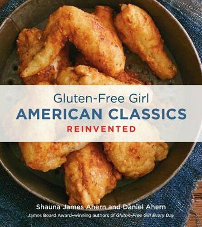 Instead of telling a personal story about how hard it is to avoid gluten or going into details on medical issues, this book just dives right into enjoying good food. The author wrote it with her chef husband, together they experimented with cooking to make new recipes. They had a food blog where they asked people what kind of things they missed eating since going gluten-free and they traveled all over America to experience regional dishes which they then converted into gluten-free versions. It’s an amazing undertaking.
Instead of telling a personal story about how hard it is to avoid gluten or going into details on medical issues, this book just dives right into enjoying good food. The author wrote it with her chef husband, together they experimented with cooking to make new recipes. They had a food blog where they asked people what kind of things they missed eating since going gluten-free and they traveled all over America to experience regional dishes which they then converted into gluten-free versions. It’s an amazing undertaking.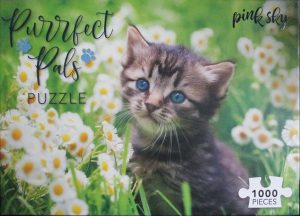 I’d never heard of this brand and liked the puzzle better than I expected so I looked it up. Appears to be print-on-demand, and none of the other images really appeal to me. Oh well. It’s ribbon-cut, standard kind of piece shapes with just enough variety. Really shiny surface which I didn’t mind this time. Cute kitten, however I started thinking of this puzzle as the “cat surrounded by fried eggs” because those blurry daisies looked just like that after a while. They were rather maddening to put together. Even more so the green background which I did last, and it took a lot of trial-and-error just one piece after another until I found the one that fit. Phew- a relief to finally complete it! This was a thrift store find, very pleased there’s no missing pieces. (I’m a bit baffled at the title though- who’s the pal to this kitten? the puzzler? there’s no other creature in the picture- not even a ladybug.)
I’d never heard of this brand and liked the puzzle better than I expected so I looked it up. Appears to be print-on-demand, and none of the other images really appeal to me. Oh well. It’s ribbon-cut, standard kind of piece shapes with just enough variety. Really shiny surface which I didn’t mind this time. Cute kitten, however I started thinking of this puzzle as the “cat surrounded by fried eggs” because those blurry daisies looked just like that after a while. They were rather maddening to put together. Even more so the green background which I did last, and it took a lot of trial-and-error just one piece after another until I found the one that fit. Phew- a relief to finally complete it! This was a thrift store find, very pleased there’s no missing pieces. (I’m a bit baffled at the title though- who’s the pal to this kitten? the puzzler? there’s no other creature in the picture- not even a ladybug.)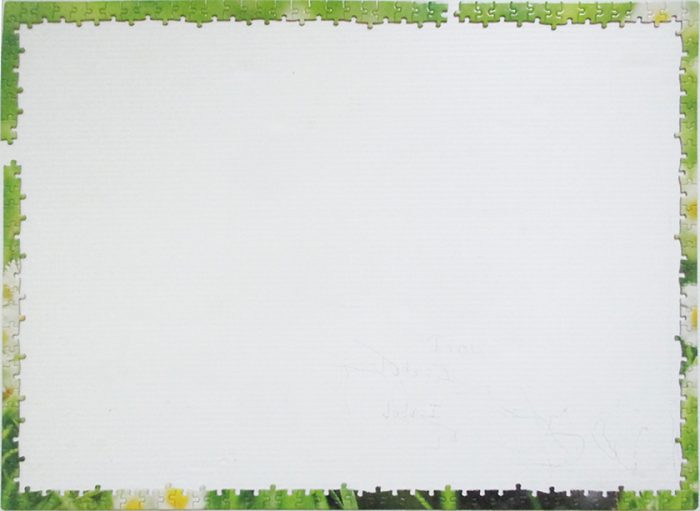
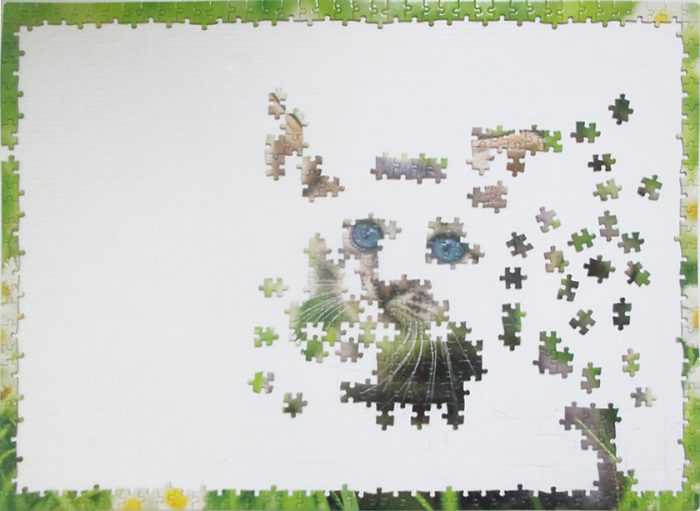
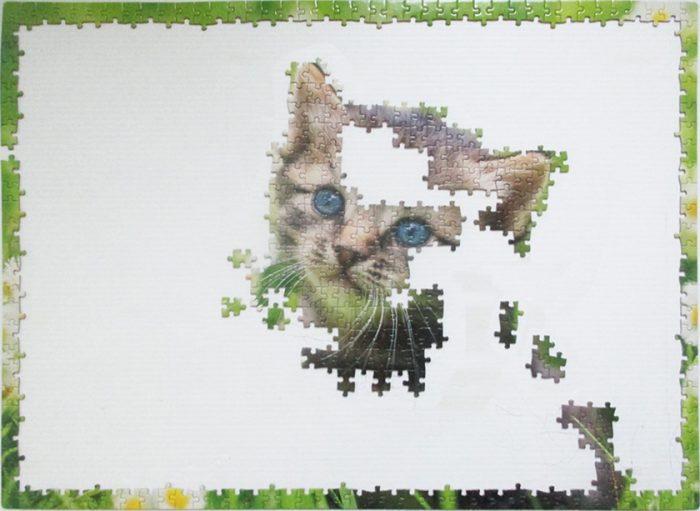
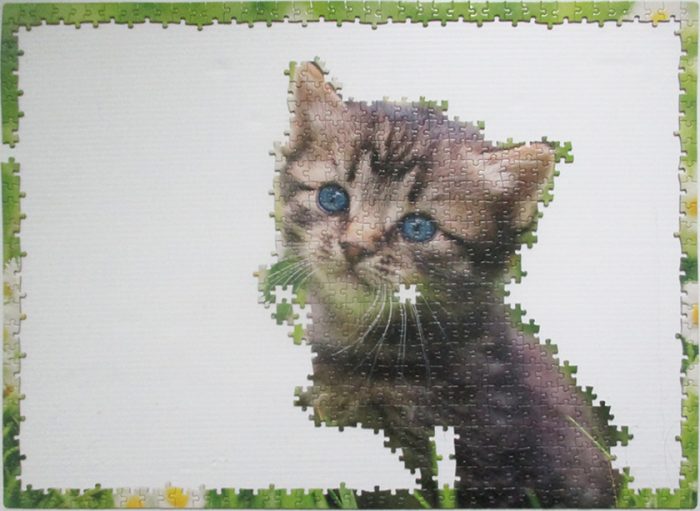
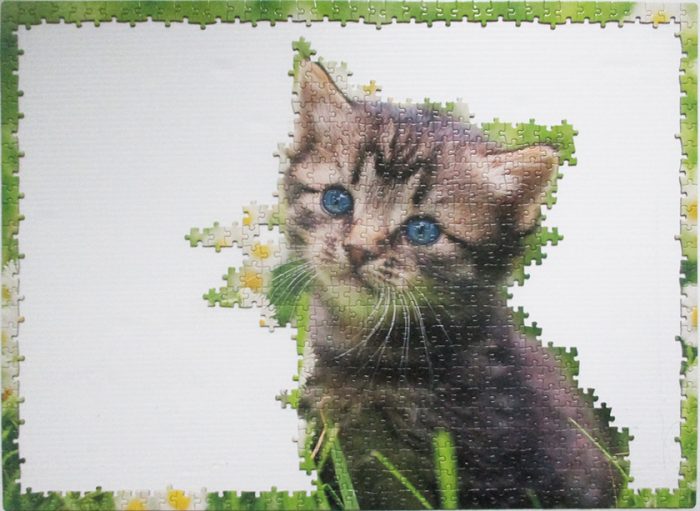
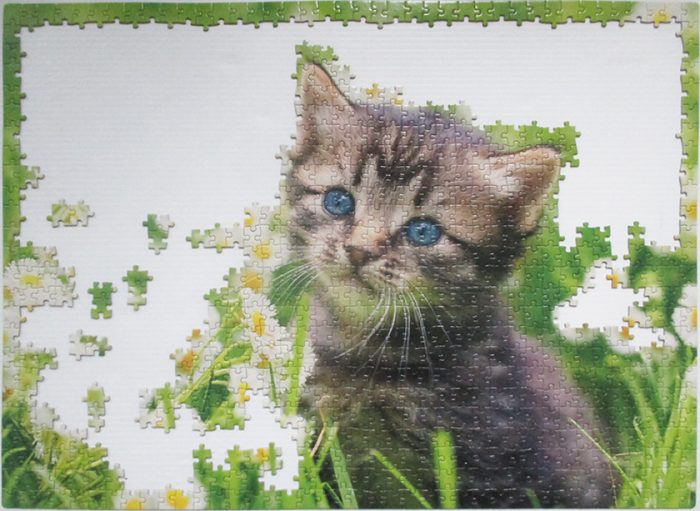
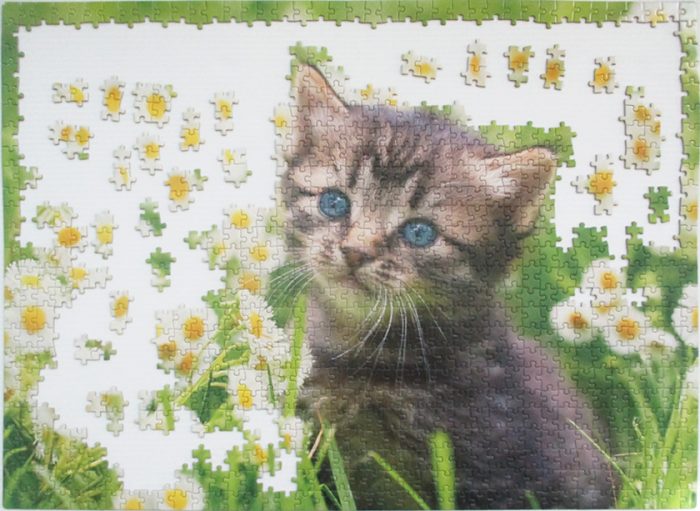
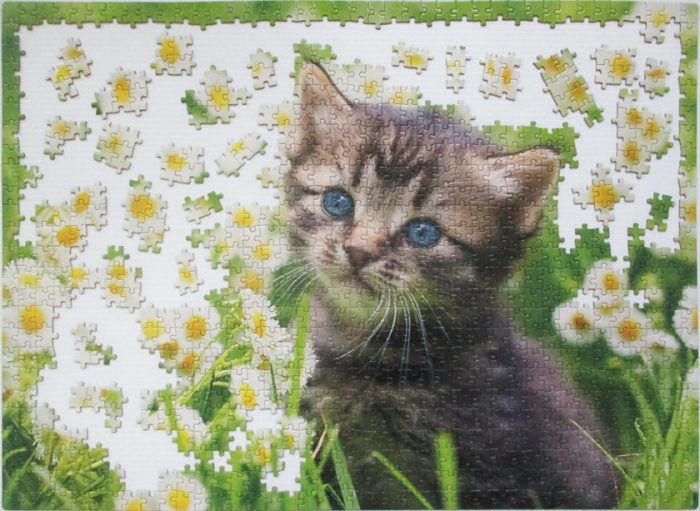
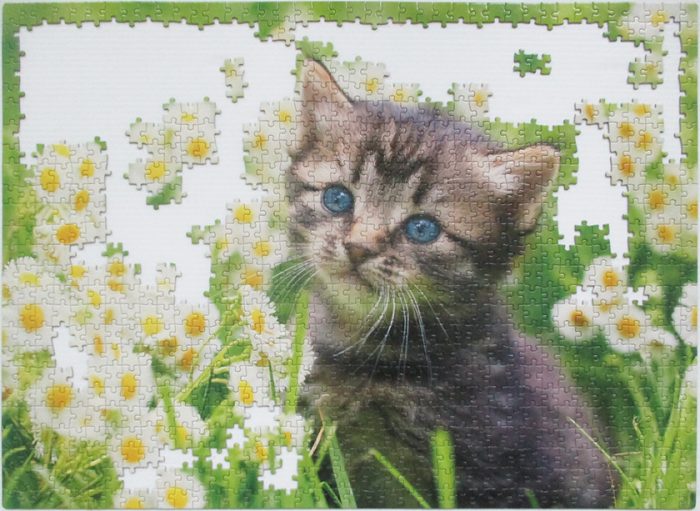


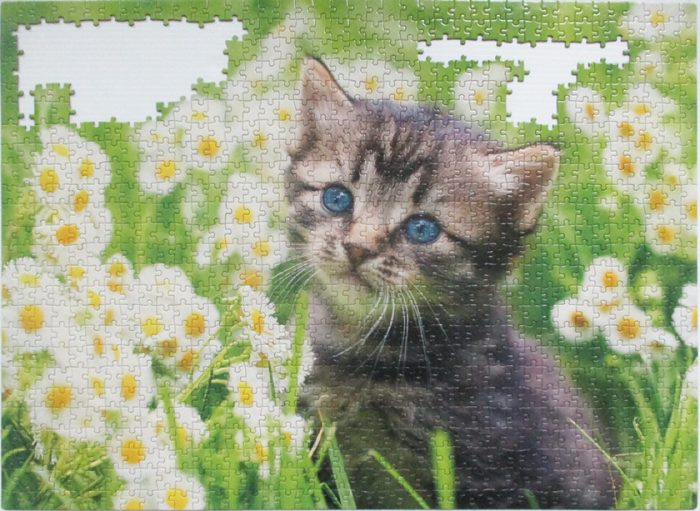
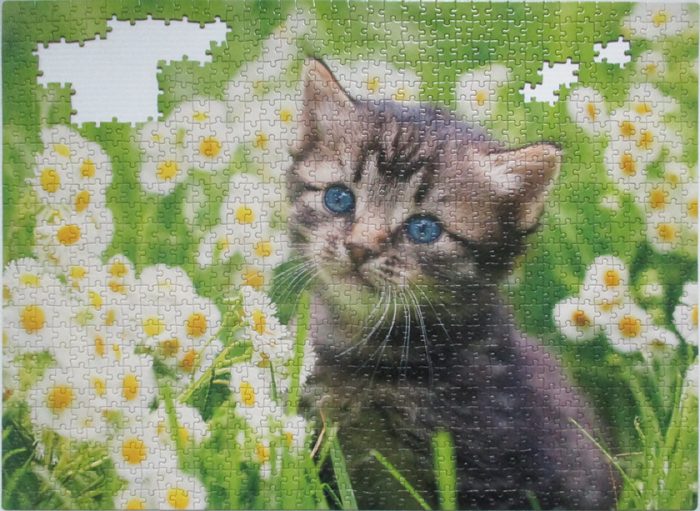
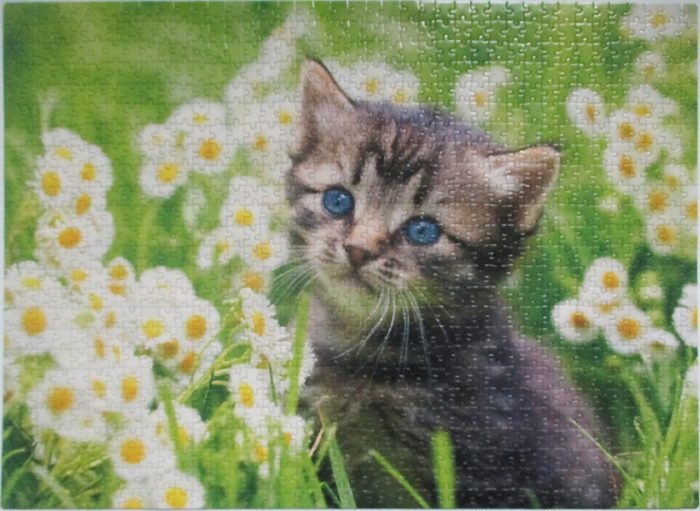
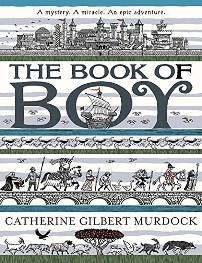
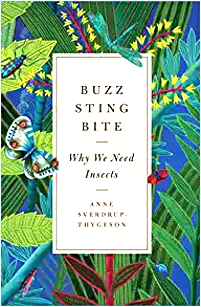


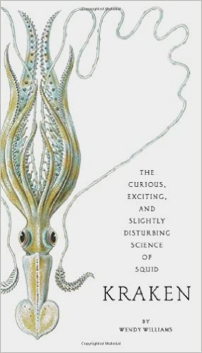
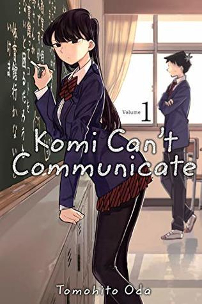
 I think this panoramic puzzle is pretty (and I like that I recognize most of the flowers: borage, chicory, lavender, rose campion…) but the colors are a bit on the pastel side. Kind of delicate. It’s a puzzle made in China, but this one didn’t actually irritate my skin, just made my fingers feel like they were slightly grimy, so I had to wash my hands after each sitting. It was a bit aggravating that lots of pieces were “false fits” – took me several tries to get the border figured out, and I had some interior pieces in the wrong place for a long time, too. Nice enough, but I don’t know if I’ll buy another Lang puzzle (this one was secondhand)
I think this panoramic puzzle is pretty (and I like that I recognize most of the flowers: borage, chicory, lavender, rose campion…) but the colors are a bit on the pastel side. Kind of delicate. It’s a puzzle made in China, but this one didn’t actually irritate my skin, just made my fingers feel like they were slightly grimy, so I had to wash my hands after each sitting. It was a bit aggravating that lots of pieces were “false fits” – took me several tries to get the border figured out, and I had some interior pieces in the wrong place for a long time, too. Nice enough, but I don’t know if I’ll buy another Lang puzzle (this one was secondhand)













